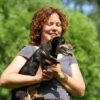Breed-Specific Documents
Articles that may be linked under several categories as well as to a specific breed
27 files
-
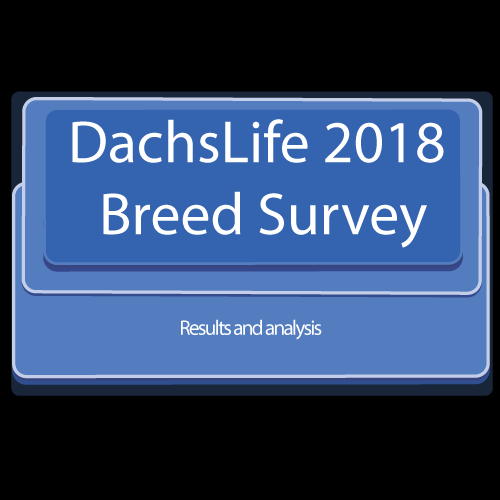
-
 Oculoskeletal dysplasia
Oculoskeletal dysplasia
• Canine genetics research at the Animal Health Trust
• Basic genetics
• Finding disease mutations
• Genetics of OSD – Part 1 –
Identifying the causal mutation
• Genetics of OSD – Part 2 –
Implications for the breed
• Summary and Breeding Advice
• Acknowledgements
• OSD3 DNA Test
Breeds information/impacts...
- the drd1 mutation in the gene COL9A3 in the Labrador retriever
- the drd2 mutation in the gene COL9A2 in the Samoyed - autosomal recessive mode of inheritance of the complete phenotype
• Clinical findings in the Labrador retriever & in the Samoyed
(Carrig et al. 1988 & Goldstein et al. 2010)
- disproportionate dwarfism
- corneal opacities, cataracts, persistent hyaloid artery remnants, vitreal dysplasia, alterations in optic nerve head colour + size, retinal dysplasia retinal detachment
• Recently observed in 7 Northern Inuit Dogs (NID)
-
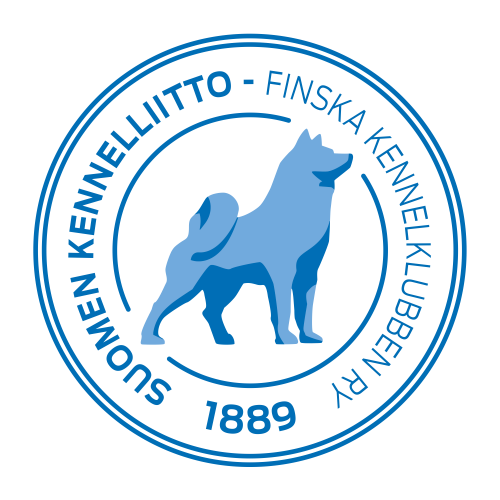
-
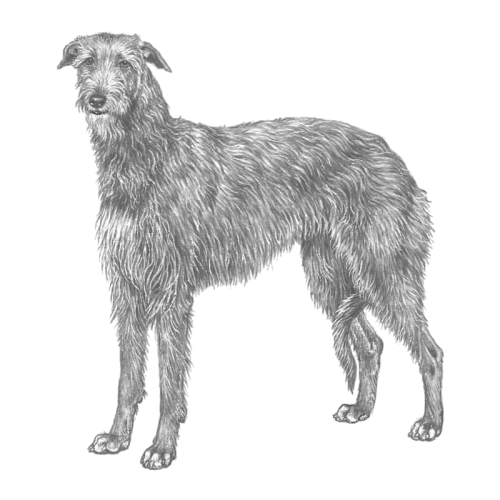 This article is available at:
This article is available at:
https://cgejournal.biomedcentral.com/articles/10.1186/s40575-017-0042-8
Many thanks to Emma Buckland, BioMed Central Ltd. for sharing this research with DWN.
Plain English Summary
"Osteosarcoma (bone cancer) is the most common cancer in Scottish Deerhounds. For Deerhounds, a 2007 study concluded that a single dominant genetic factor largely governed disease risk. For Greyhounds, Rottweilers, and Irish Wolfhounds, a 2013 study found multiple genetic markers in each breed, with each marker only weakly associated with the disease.
We obtained from two breeders the pedigrees, age (if alive) or age at death, and bone cancer status for two families of Scottish Deerhounds, designated Cohorts K and T. A dog was considered unaffected only if it was free of bone cancer and at least 8.5 years old. We analyzed the data in two ways, by assuming either a single recessive genetic factor or a single dominant genetic factor.
Cohort K contained 54 evaluable dogs representing 12 litters. Cohort T contained 56 evaluable dogs representing eight litters. Bone cancer seemed clearly heritable in both cohorts; however, having a parent with bone cancer raised a pup’s risk of developing bone cancer itself to 38% for Cohort K but 78% for Cohort T, suggesting the possibility of different genetic risk factors in each cohort. In Cohort K, bone cancer inheritance fit well with a single recessive risk factor, although we could not rule out the possibility of a single dominant risk factor. In Cohort T, inheritance could be explained well by a single dominant risk factor but was inconsistent with recessive expression.
Inheritance of bone cancer in two Scottish Deerhound families could be explained well by a single genetic risk factor, consistent with a 2007 report. In one family, inheritance was consistent with dominant expression, as previously reported. In the other family, inheritance fit better with recessive expression, although the possibility of a dominant genetic factor influenced by one or more other genetic factors could not be ruled out. In either case, the results suggest that there may be at least two different genetic risk factors for bone cancer in Deerhounds."
-
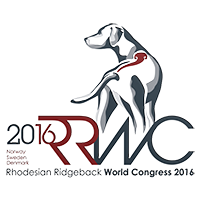 An international collaboration and event!
An international collaboration and event!
The Rhodesian Ridgeback World Congress 2016
The Rhodesian Ridgeback World Congress was held in Sweden June 28 - June 30, 2016.
We hope that those who were not able to attend the congress, can take part in the congress by reading the congress program.
The Program (external link)
http://www.nordicrrwc.org/images/files/RRWC-2016_Program.pdf
Several speaker's Presentations have been uploaded to the http://www.nordicrrwc.org/ website as of November, 2016.
-- See the Program presentations at http://www.nordicrrwc.org/rrwc-2016/program
Event information is also available on the RRWC's Facebook page: https://www.facebook.com/rrwc2016/
The Rhodesian Ridgeback World Congress 2016 speaker Presentations are available here on DWN as well (retained for record retention purposes).
Also see the DWN's Rhodesian Ridgeback resources.
-
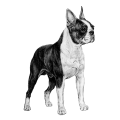 Collected registration statistics from multiple countries/registries (AKC, SKK, FKC, VDH, etc. ...) The Boston Terrier from Canine Chronicle November-December 2013 (breed development, AKC recognition and other historical content) Original source: Complete issue (large file): Canine Chronicle - http://www.onlinedigitalpubs.com/publication/?i=182847
Collected registration statistics from multiple countries/registries (AKC, SKK, FKC, VDH, etc. ...) The Boston Terrier from Canine Chronicle November-December 2013 (breed development, AKC recognition and other historical content) Original source: Complete issue (large file): Canine Chronicle - http://www.onlinedigitalpubs.com/publication/?i=182847
PDF- http://cdn.coverstand.com/2330/182847/d105c1de26dbff0958053b01040662e74eebd2ba.13.pdf UK: The Kennel Club Breed Health Survey 2004, Boston Terrier: source: http://www.thekennelclub.org.uk/media/16322/boston%20terrier.pdf -

-
 "Suomen Sveitsinpaimenkoirat – Finlands Sennenhundar ry (Swiss Mountain & Cattle Dog Club of Finland) celebrated its 50th anniversary in 2015, and to mark the occasion the club decided to arrange a specialty show, an international health symposium and a meeting of the IWG in Helsinki. In connection with these events also an international meeting of Bernese Mountain Dog judges was proposed. This meeting was the first of its kind, and the proposal met with overwhelming support from judges who saw it as very necessary. The breed has changed over the years and so have the problems that judges keep seeing when at dog shows."
"Suomen Sveitsinpaimenkoirat – Finlands Sennenhundar ry (Swiss Mountain & Cattle Dog Club of Finland) celebrated its 50th anniversary in 2015, and to mark the occasion the club decided to arrange a specialty show, an international health symposium and a meeting of the IWG in Helsinki. In connection with these events also an international meeting of Bernese Mountain Dog judges was proposed. This meeting was the first of its kind, and the proposal met with overwhelming support from judges who saw it as very necessary. The breed has changed over the years and so have the problems that judges keep seeing when at dog shows."
overview...
This document contains an in depth summary of the 2015 Meeting of an esteemed group of international Bernese Mountain Dog judge's - 43 judges from 13 different countries. Breed characteristics are discussed as they relate to breeding and judging dogs that conform to the Breed Standard. The purpose of this meeting was to discuss the current problems in Bernese Mountain Dog conformation and the principles of conformation judging. Prior to the meeting judges from around the world were asked to provide input as to the top five problematic issues related to conformation they were seeing in exhibited BMDs. The Judge's input was analyzed and five main issues were selected for closer discussion: proportions, head & mouth, fronts, tails, and coats. The main issues judges identified as well as other breed characteristics were discussed in the meeting with reference to the English language version of the breed standard. The latest version of the FCI's BMD breed standard was published in 2003 and its contents are the responsibility of Switzerland, the country of origin of the breed.
This document was posted on Bernese Mountain Dog Judges Facebook page <https://www.facebook.com/groups/320636241455430/> (a closed group for BMD judges only) on October 11, 2015. Sharing the document with colleagues and clubs was suggested.
The program
-
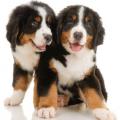 This presentation was given by Katariina Mäki, PhD at the 10th Bernese Mountain Dog International Health Symposium, 8-30-2015.
This presentation was given by Katariina Mäki, PhD at the 10th Bernese Mountain Dog International Health Symposium, 8-30-2015.
Contents include:
Introduction to EBVs
EBV for longevity: Bernese Mountain Dog data
Some conclusions
"Longevity as a trait in breeding is Complicated!
BUT...
With a large amount of data, hopefully some regularities can be found
If they are genetic, breeding for longer lifespan is possible."
While the presentation includes data and particulars for Bernese Mountain Dogs, the ideas presented pertaining to the use of EBVs can be applied across all breeds.
-
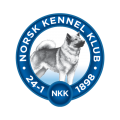 Rasespesifikk avlsstrategi (RAS)
Rasespesifikk avlsstrategi (RAS)
for
Irish soft coated wheaten terrier
(Norwegian)
Document Source: http://www.norskterrierklub.no/Userfiles/Sites/files/RASISWT.pdf
This document contains breed history and health information, mentality information and statistical breed population analysis tables and charts.
-
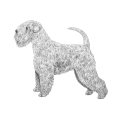
-
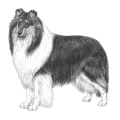
-
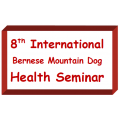 8th Annual Bernese Mountain Dog Health Symposium Booklet (142 pages, 3 parts)
8th Annual Bernese Mountain Dog Health Symposium Booklet (142 pages, 3 parts)
Booklet includes:
BIWG speaker synopses - topics covered:
Dr Jane Dobson - Latest Advances in Clinical Treatments for cancers Dr Bernoit Hedan - Genetic Progress in the fight against Histiocytic Sarcoma Dr Lorna Kennedy - DLA Research and its potential in the battle against Malignant Histiocytosis Dr Jeff Sampson - The Kennel Club position on Breed Health and the way forward for health schemes Samantha Goldberg - Steroid Responsive Meningitis – an emerging problem for the BMD? Dr Urs Geissbuehler - Study of Morbidity and Mortality in Bernese Mountain Dogs in Switzerland Prof Berndt Klingeborn - Results of Swedish Pet Insurance company survey into BMD Health Pat Long - Background to and why BMD owners should all support Berner Garde Steve Green - Berner International Working Group
Reports from various clubs around the world outlining the current situation of Bernese Mountain Dogs in their country.
-
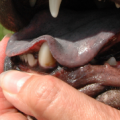
-
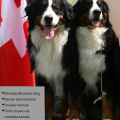 Hip Ratings Comparison Chart – 2010
Hip Ratings Comparison Chart – 2010
Source: http://www.bmdinfo.org/Health/Hip_Rating_Comparison_Chart_Bernese_Mountain_Dogs.htm
Understanding Hip Ratings
With the advent of worldwide import and export of show, breeding and companion dogs, we encourage Berner breeders and pet buyers to develop a basic understanding of how different countries and registry's hip ratings evaluation systems work.
PUPPY BUYER'S NOTE: To minimize the chances of having to cope with the heartache, expense and management of a dysplastic BMD, before importing a Berner, please visit the Berner-Garde database <www.bernergarde.org> for specific information on hip results for families of dogs and individual Bernese Mountain Dogs.
This chart is designed to enhance knowledge of systems for rating Bernese Mountain Dog hips. The chart is meant to be a relative guideline for roughly estimating equivalent hip ratings between various evaluation systems.
The hip registry information on this page was compiled by Pat Long.
Please contact Pat <pat@bmdinfo.com> for additional information, or to comment.
Please be advised...ratings of identical radiographs in different systems and/or by different evaluators may not receive the equivalent ratings.
-
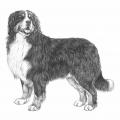
-
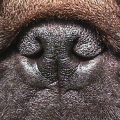 A comprehensive presentation on French Bulldog genetic management.
A comprehensive presentation on French Bulldog genetic management.
A Genetic Overview of the French Bulldog: Author. Dr. Jerold Bell. 2009
Dr. Bell's presentation includes breed specific genetic management concerns and health information including survey results, slides of malformed vertebrae, stenotic nares, pedigree analysis, discussion of COI.
content example...
Health Issues by Diagnosis in the French Bulldog 2009 FBCA Health Survey
•Vertebral Malform. 35.09%
•Allergic Dermatitis 27.98%
•Stenotic Nares 21.56%
•Elongated Soft Palate 15.83%
•Food Allergy 14.22%
•Other-Temperament 8.49%
•Allergic Rhinitis 7.80%
•Pyometra 7.00%
•Irregular or Split Heats 6.58%
•Intervertebral Disc Dz 5.50%
•Other Female Repro 5.35%
•Other-Gastrointestinal 5.05%
•Extreme Aggression 4.59%
•Hypoplastic Trachea 4.36%
•Cryptorchidism 4.15%
•Demodex-generalized 4.13%
•Hip Dysplasia 4.13%
•Other-Ophtho 3.90%
•Resorption of litters 3.70%
•Other – Dermatologic 3.44%
•Frequent cystitis 3.21%
•Mast Cell Tumor 2.98%
•Hypothyroidism 2.98%
•Wry Jaw 2.98%
•Other Respiratory 2.98%
•Degenerative Myelopathy 2.29%
-
 excerpt...
excerpt...
"The French Bulldog was removed from the list of high profile breeds in the autumn of 2013. The breed has taken a consistently proactive approach to health and welfare and fulfilled all of the criteria for removal set by the Kennel Club. This is a very positive step forward for the breed and for the Kennel Club. In this year’s report we have therefore included a special feature on the breed’s progression, prepared by the French Bulldog breed health co-ordinator, Mrs Penny Rankine-Parsons."
-
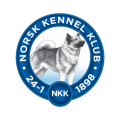 Statistics include:
Statistics include:
FCI No.
Year Year of puppy registration
Registration (no.) Number of puppies registered
HD x-raid (no.) Number of the dogs registered this year that have been x-raid for hip dysplasia (HD)
HD A+B (no.) Number of dogs diagnosed with HD=A or B (both considered free of HD)
HD C (no.) Number of dogs diagnosed with HD=C (mild)
HD D (no.) Number of dogs diagnosed with HD=D (moderate)
HD E (no.) Number of dogs diagnosed with HD=E (severe)
ED x-raid (no.) Number of the dogs registered this year that have been x-raid for elbow dysplasia (ED)
ED 0 (no.) Number of dogs diagnosed with ED= 0 (free)
ED 1 (no.) Number of dogs diagnosed with ED=1 (mild)
ED 2 (no.) Number of dogs diagnosed with ED=2 (moderate)
ED 3 (no.) Number of dogs diagnosed with ED=3 (severe)
Used for breeding Number of dogs registered this year that has registered off-spring during the dogs' life
Attended dog show Number of the dogs registered this year that have attended one or more dog show during the dogs' life
Attended working/hunting trails Number of the dogs registered this year that have attended one or more breed spesific working/hunting trails during the dogs' life
-
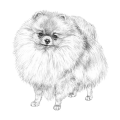
-
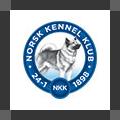
-
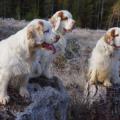
-
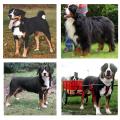
-
 Author: Bert Klei, Ph.D.
Author: Bert Klei, Ph.D.
University of PIttsburgh Medical Center
This article specifically applies to Bernese Mountain Dogs | The Berner-Garde Database COI calculator; however, the article does provide discussion and general information on use of COI, and COI calculators.
Excerpt...
"An inbreeding calculator determines the COI. In genetic terms this is the probability that the two alleles at a locus are identical by descent. In practice people think about this as the chance that the two copies of a gene come from a single copy of a gene from a single ancestor. When breeders talk about "doubling up" on traits, this is to what they are referring."
-



